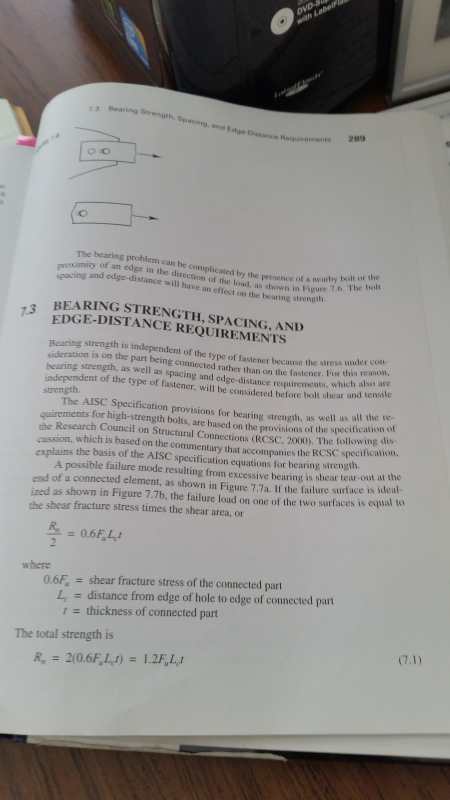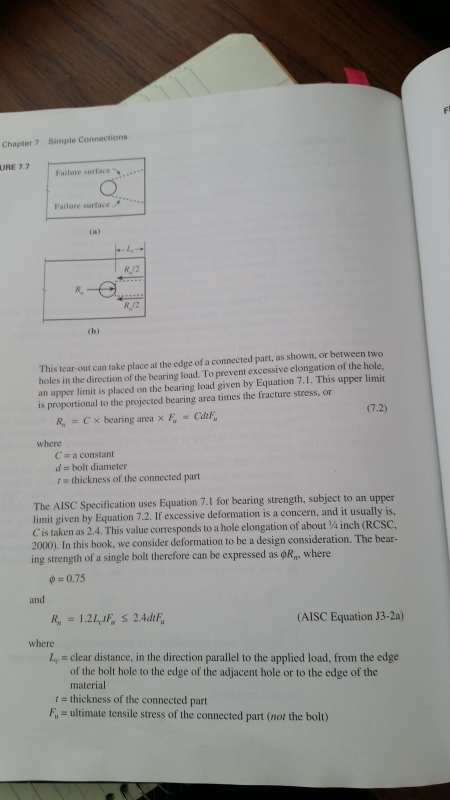CraneEng87
Mechanical
Hello,
I am using AISC Steel Construction Manual 9th Edition attempting to assess a bolted connection in shear. The manual says under Chapter J page 5-74 that the allowable bearing stress for a standard hole with two or more bolts in line of force to use the below formula.
Fp = 1.2Fu
Fp is the allowable bearing stress, ksi
Fu is the specified minimum tensile strength of the critical connected part, ksi
My question is what is "minimum tensile strength"?
My first thought is Ultimate strength however the 1.2 factor would make my allowable exceed it and I've never seen an allowable anywhere near Ultimate.
Any Ideas?
I am using AISC Steel Construction Manual 9th Edition attempting to assess a bolted connection in shear. The manual says under Chapter J page 5-74 that the allowable bearing stress for a standard hole with two or more bolts in line of force to use the below formula.
Fp = 1.2Fu
Fp is the allowable bearing stress, ksi
Fu is the specified minimum tensile strength of the critical connected part, ksi
My question is what is "minimum tensile strength"?
My first thought is Ultimate strength however the 1.2 factor would make my allowable exceed it and I've never seen an allowable anywhere near Ultimate.
Any Ideas?

![[idea] [idea] [idea]](/data/assets/smilies/idea.gif)
![[r2d2] [r2d2] [r2d2]](/data/assets/smilies/r2d2.gif)


